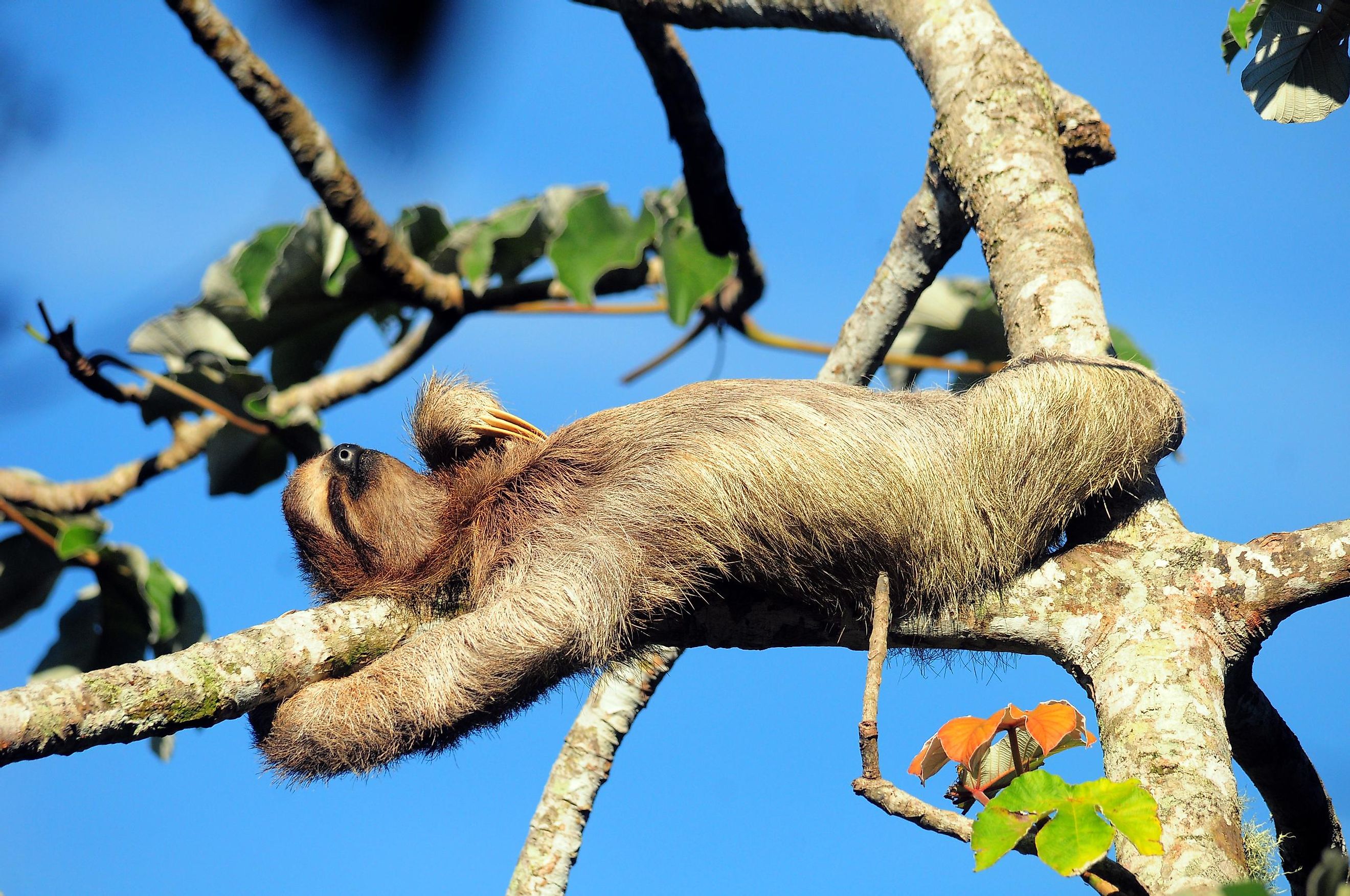
10 Animals That Sleep The Most
Sleep is a strange fact of life for (nearly) all sentient life forms. It is a time for growth and regeneration, lying low out of harm's way, and for some animals, dreaming of past events or conjuring curious premonitions. Depending on each species' environment and metabolism, sleep habits can range from incredibly minimal to nearly all-encompassing. These nine animals bank the most hours dozing each day.
- Koala - 18–22 hours/day
- Sloth - 15-20 hours/day
- Little Brown Bat - 19.9 hours/day
- Giant Armadillo - 18.1 hours/day
- Python - 18 hours/day
- North American Opossum - 18 hours/day
- Owl Monkey - 17 hours/day
- Human Infants - 16 hours/day
- Tiger - 15.8 hours/day
- Tree Shrew - 15.8 hours/day
1. Koala - 18–22 hours/day
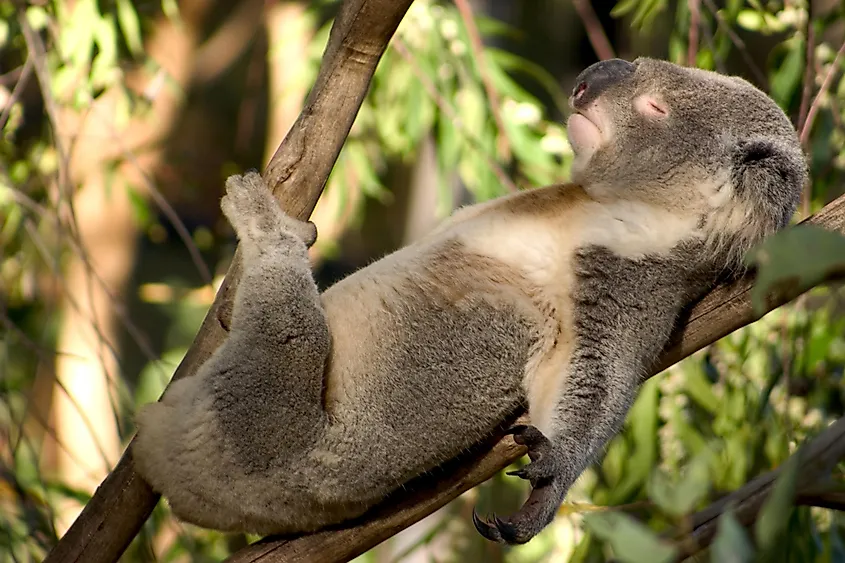
Koalas (often called koala "bears," even though they are marsupials) live in Eastern and Southeastern Australia. They rely on the eucalyptus forests in these regions for both their habitat and predominant food source. They sleep so much because the toxic leaves tax their digestive system and provide limited nutrition/energy in return. Koalas sleep most of the day away in the safety of their tree dwellings and utilize the few waking hours primarily for eating. Unfortunately, koalas have faced threats over the last century from hunters (who sought their fur), and now habitat loss due to logging and the recent notorious bushfires. They are currently listed as vulnerable on the IUCN Red List Status.
2. Sloth - 15-20 hours/day
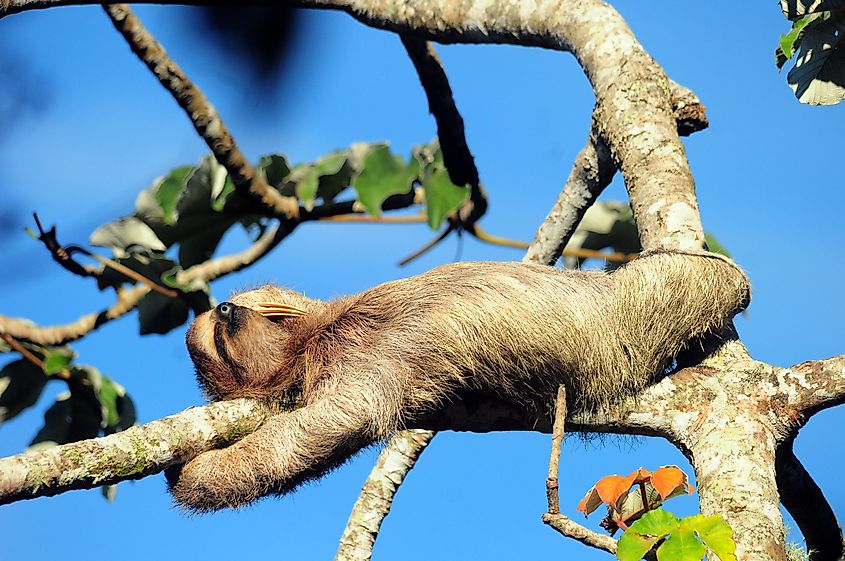
No surprise here. These soporific tree-dwellers lounge around in the tropical rainforests of Central and South America. When it is time to rise and shine (which is not very often), they slowly cover about 40 yards throughout the day in search of food. They mostly stick to the canopy but descend about once a week for a bathroom break and will occasionally drop into the water for a refreshing swim. The sloth's slow metabolic rate is the reason for its sluggish behavior. Four of the six species maintain healthy populations, while the Maned sloth is listed as vulnerable, and the Pygmy three-toed sloth is critically endangered.
3. Little Brown Bat - 19.9 hours/day
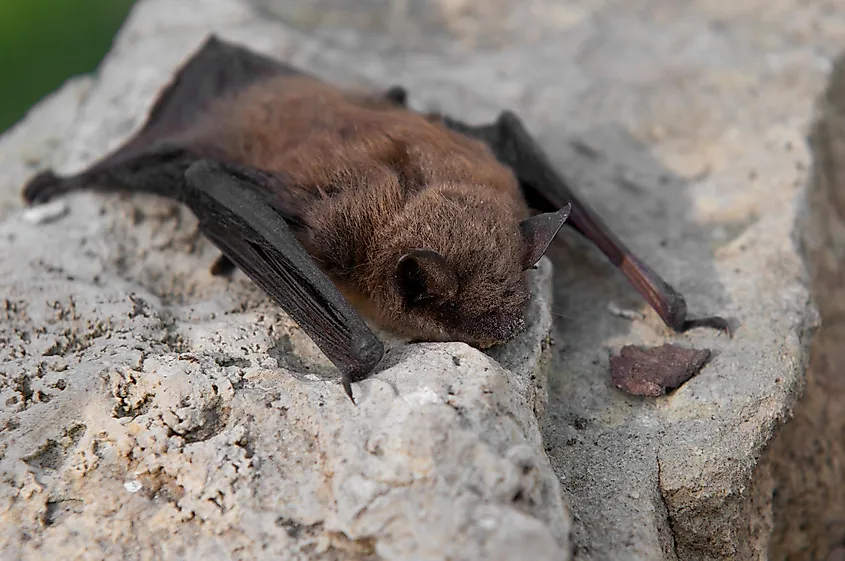
Little brown bats are spread across North America, from the Pacific to Atlantic Coasts, and all the way from Alaska down to some parts of Mexico. Wherever they are on the continent, these compact nocturnal creatures typically stick to forested areas near lakes and rivers. During the fair-weather season, they will congregate in abandoned or underutilized buildings for mating purposes, and they will head to caves and mines when it is time to hibernate. These bats take full advantage of their brief hunting windows, consuming upwards of 1000 insects during this time (or, for pregnant females, the equivalent of their entire body weight). Though exact numbers are difficult to estimate, the little brown bat's population is considered stable.
4. Giant Armadillo - 18.1 hours/day
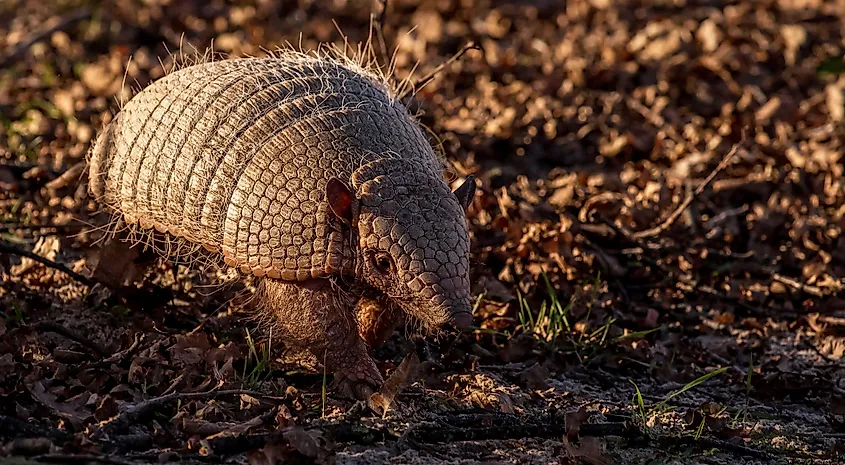
The Giant armadillo roams throughout large parts of Northern/Central South America, seeking anywhere that has abundant termites. These nocturnal animals are easily recognizable by their hard outer coverings and prominent central claw. This latter feature is used to burrow into the ground to escape predators and also to hunker down for their long daily slumbers. This species is classified as vulnerable, facing threats due to habitat loss and excessive hunting (for meat and illegal trading purposes). Giant armadillos are also considered pests by some farmers and dealt with as such.
5. Python - 18 hours/day
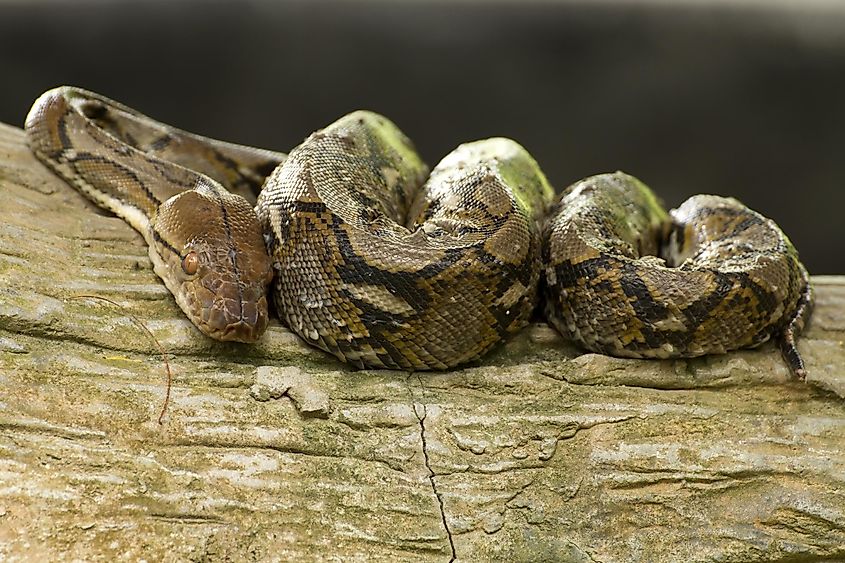
These bulky, nonvenomous snakes are native to Asia, Africa, and Oceania, though they have also become invasive in the West, particularly in Florida's Everglades. There are 41 species within the Pythonidae family, of which the ball python is perhaps the sleepiest. But because they sleep with their eyes open, it is tricky to tell when they are zonked out or just lying dormant. In either case, ball pythons will hide away during long stretches of the day and then engage in ambush hunting by night. The sleep schedule of these snakes is not only based on their nocturnal habits but also directly correlates to the size of their most recent meal. Thirteen species of python are on the Red List, with humans being the primary threat (hunting for their skins).
5. North American Opossum - 18 hours/day
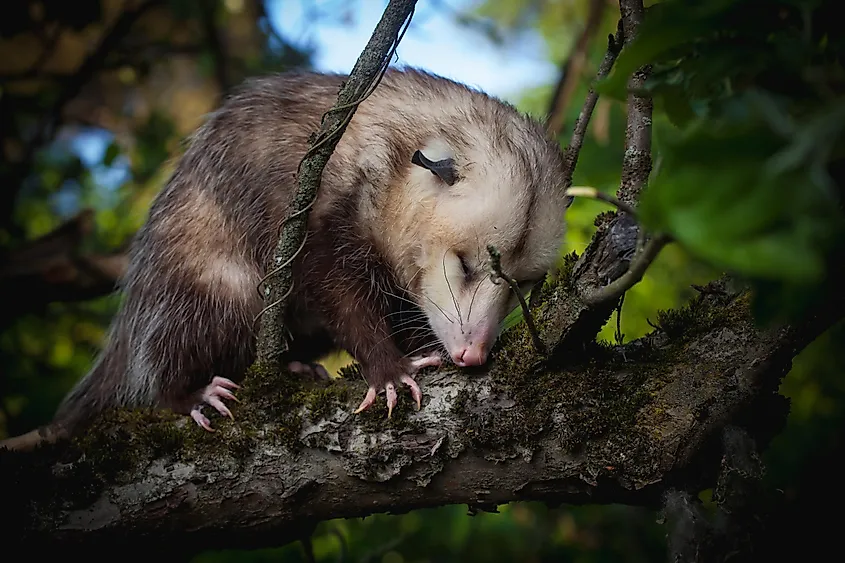
Also known as the Virginia opossum, this adorable animal is widely distributed throughout Central and North America. This domestic cat-sized animal is nocturnal and hence, sleeps throughout the day for as long as 18 hours in tree hollows or abandoned rodent burrows. At night, it hunts for food in the form of fish, reptiles, amphibians, etc., and also feeds on plant matter. The most interesting trait of this animal is its ability to feign death when threatened, which is the source of the term "playing possum." To deceive the predator, especially animals that prefer hunting live prey, it can lie in this state for hours, completely limp and motionless, with its tongue hanging out and eyes and mouth open.
7. Owl Monkey - 17 hours/day
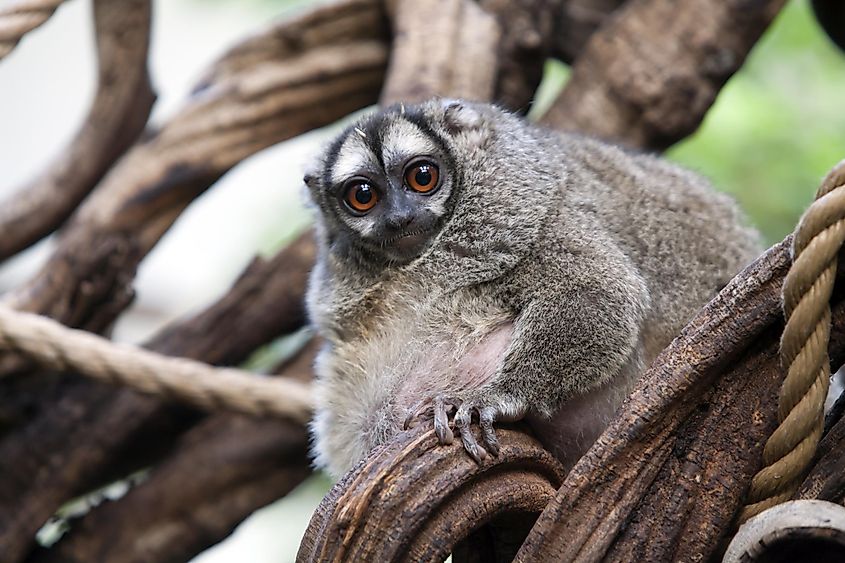
The owl monkey (or "night monkey") can be found scattered throughout the forests of Panama and parts of South America and is classified accordingly as either a Northern or Southern night monkey. These primates live in family groups and can be heard calling out to each other using their distinctive vocalizations (typically to signal potential threats). The owl monkey's large eyes provide excellent night vision, which is essential for their nocturnal foraging and hunting habits, and also make them adorable to human onlookers.
8. Human Infants - 16 hours/day

It may not feel like it for exhausted parents, but newborn babies sleep well-over half of the day away. It may not be in a congruous fashion or at opportune times for the caregivers, but between the sporadic nighttime slumbers, the strategic car-ride naps, and anytime throughout the day when the mood strikes, babies rack up a large cumulative tally. During the first phase of life, the sole focus for babies is to consume milk/formula and convert that nutrition into fat stores, fortified bones, and stronger muscles/tendons. This steady bodybuilding is accomplished most effectively during sleep.
9. Tiger - 15.8 hours/day
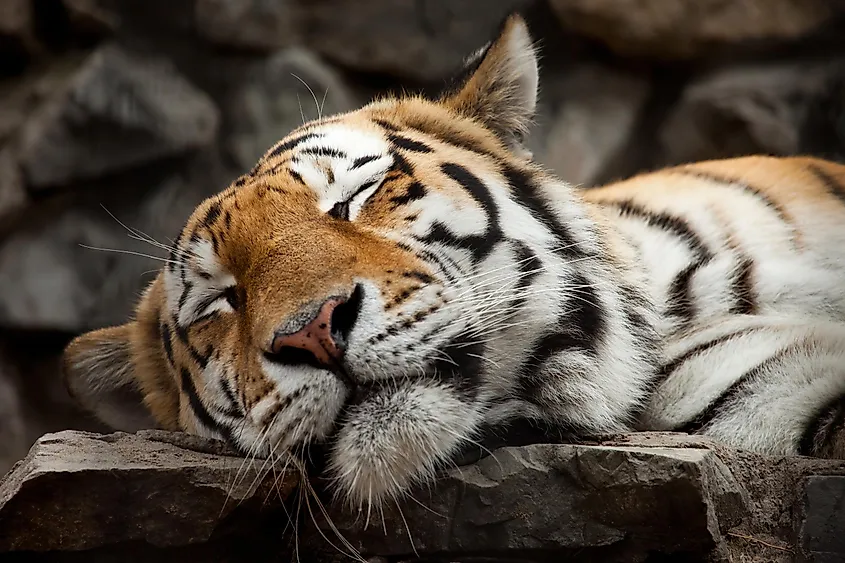
The iconic tiger is the largest of the big cats in Asia. Since 2017, there have been two recognized subspecies: the continental (Panthera tigris tigris), and the Sundra (Panthera tigris sondaica). Combined, they can be found across India, Nepal, Bhutan, Bangladesh, Russia, China, and some Southeast Asian countries - everywhere, from tropical and evergreen rainforests to mangrove swamps, grasslands, and savannas. Though their ecosystems are diverse, the tiger is an endangered species, with only about 4,500 individuals left in the wild. Thankfully, after a long period of intense dwindling, the population of tigers is beginning to rebound. These large, solitary felines can eat upwards of eighty pounds of meat in one sitting. This contributes to their impressive mass (up to 660 pounds for continental males), and also their frequent need to "rest and digest."
10. Tree Shrew - 15.8 hours/day
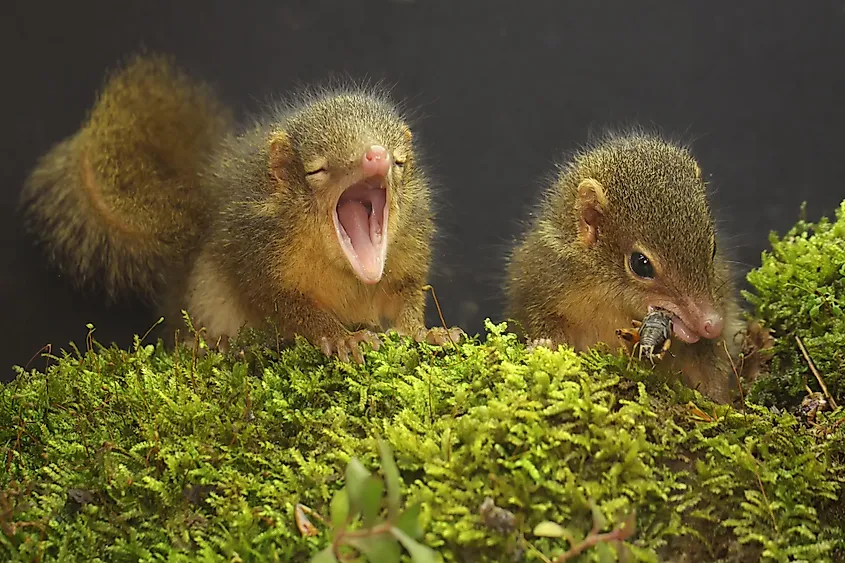
These sleepy little animals are found in the tropical forests of Asia. They are omnivores feeding on a variety of items but with a special preference for fruits and insects. Although called "tree shrews," there are both arboreal and terrestrial species of tree shrews. These animals are most active during the day when they stay in small family groups, protecting their territories from intruders. They also use urine or scent glands to mark their territories. They sleep throughout the night and as long as over 15 hours at a stretch.
Whether due to sluggish systems, nocturnal cycles, or satiated bellies, these nine animals are all about catching some zzzs. While some party-hardy humans might be able to rival these figures on a lazy Sunday, it is quite remarkable to think that regular life for these creatures is simply slept away.











